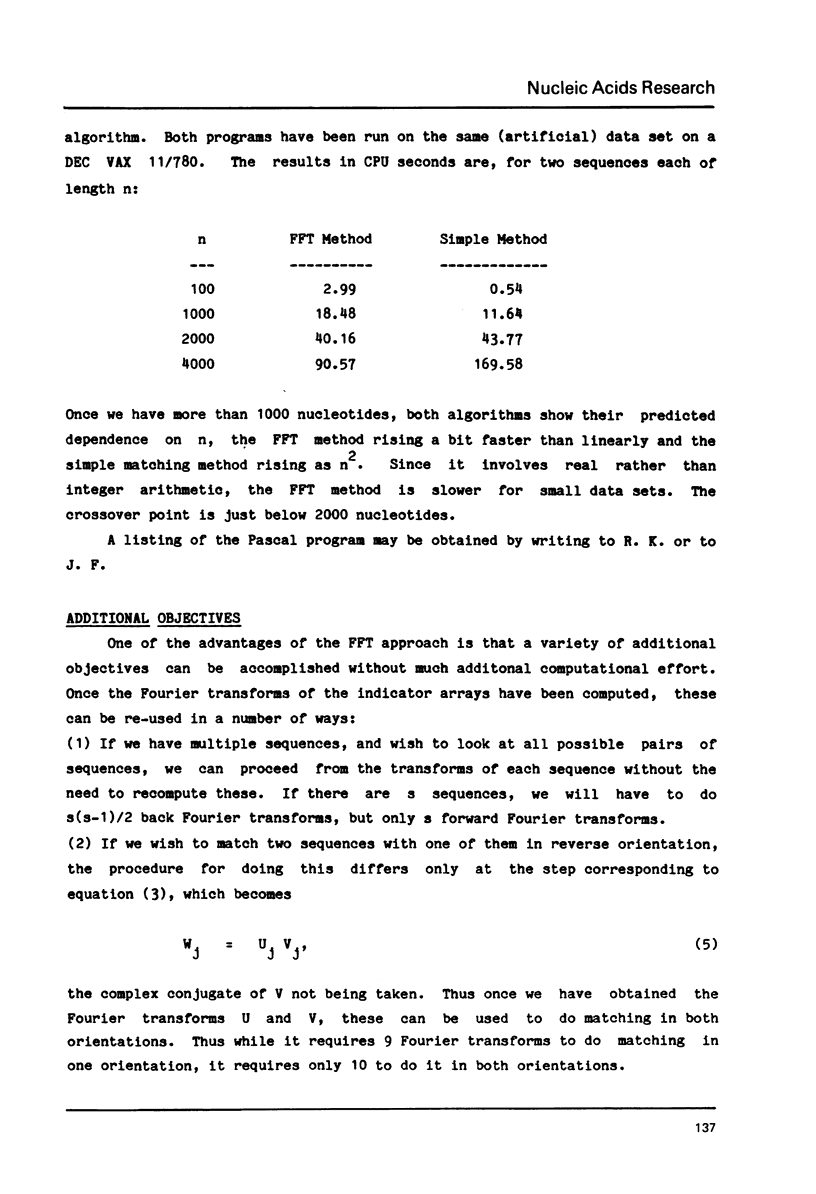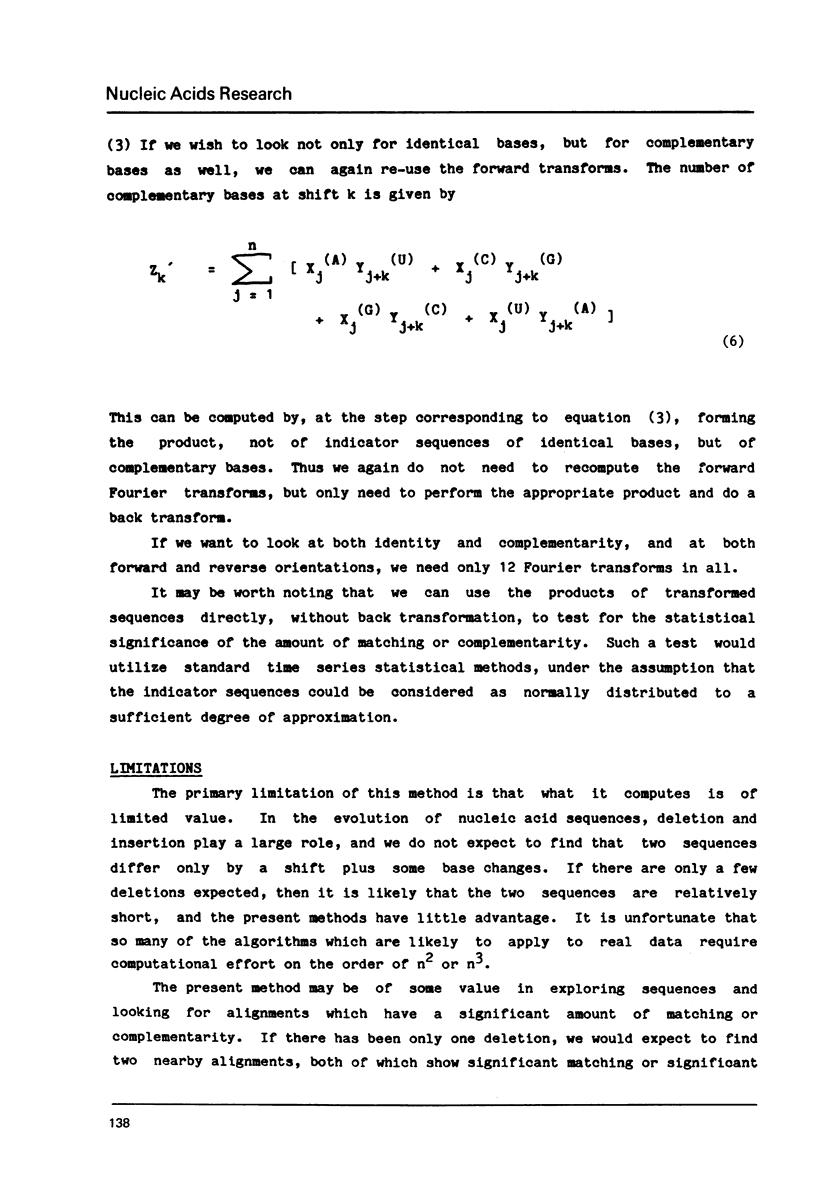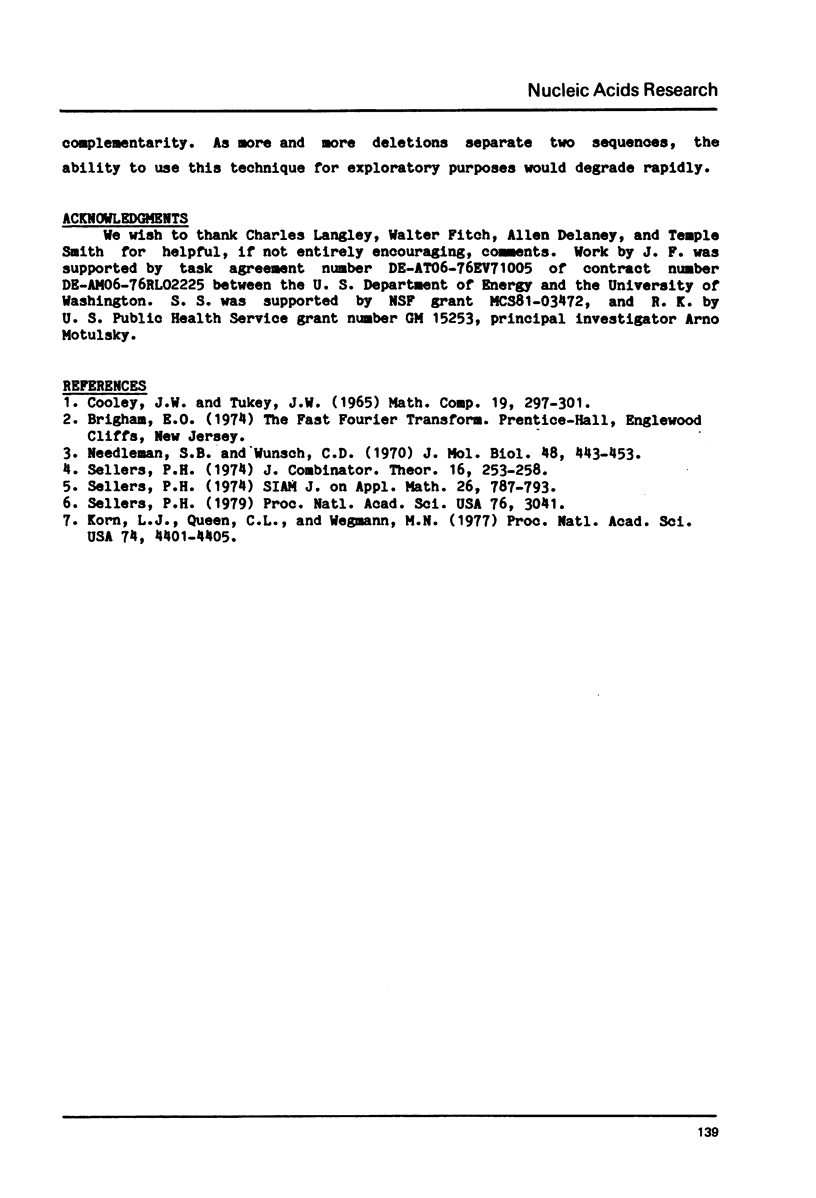Abstract
A method of computing the fraction of matches between two nucleic acid sequences at all possible alignments is described. It makes use of the Fast Fourier Transform. It should be particularly efficient for very long sequences, achieving its result in a number of operations proportional to n ln n, where n is the length of the longer of the two sequences. Though the objective achieved is of limited interest, this method will complement algorithms for efficiently finding the longest matching parts of two sequences, and is faster than existing algorithms for finding matches allowing deletions and insertions. A variety of economies can be achieved by this Fast Fourier Transform technique in matching multiple sequences, looking for complementarity rather than identity, and matching the same sequences both in forward and reversed orientations.
Full text
PDF






Selected References
These references are in PubMed. This may not be the complete list of references from this article.
- Korn L. J., Queen C. L., Wegman M. N. Computer analysis of nucleic acid regulatory sequences. Proc Natl Acad Sci U S A. 1977 Oct;74(10):4401–4405. doi: 10.1073/pnas.74.10.4401. [DOI] [PMC free article] [PubMed] [Google Scholar]
- Needleman S. B., Wunsch C. D. A general method applicable to the search for similarities in the amino acid sequence of two proteins. J Mol Biol. 1970 Mar;48(3):443–453. doi: 10.1016/0022-2836(70)90057-4. [DOI] [PubMed] [Google Scholar]
- Sellers P. H. Pattern recognition in genetic sequences. Proc Natl Acad Sci U S A. 1979 Jul;76(7):3041–3041. doi: 10.1073/pnas.76.7.3041. [DOI] [PMC free article] [PubMed] [Google Scholar]


